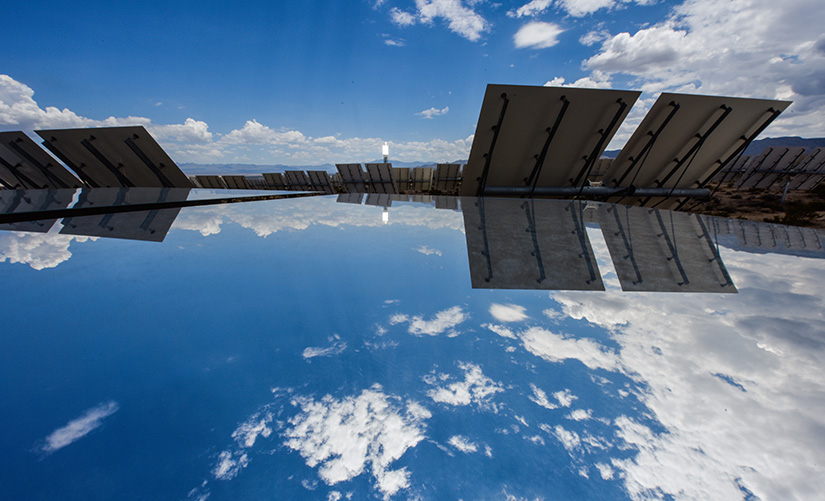Sign up for daily news updates from CleanTechnica on email. Or follow us on Google News!
The U.S. Department of Energy’s (DOE’s) Heliostat Consortium (HelioCon), co-led by the National Renewable Energy Laboratory (NREL) and joined by partners at Sandia National Laboratories and the Australian Solar Thermal Research Institute (ASTRI), announced publication of the HelioCon Annual Report: 2023, which provides detailed information on progress the HelioCon team has made since its founding, including developing impactful technical projects; expanding the number of partnerships with industry, research, education, and other institutions; increasing staff size; providing information to a growing audience through its web presence; and participating in national and international conferences with industry leaders.
“In a short amount of time, HelioCon members have contributed meaningful research, work, and awareness aimed at making heliostat technologies more accessible and affordable,” said Guangdong Zhu, HelioCon executive director and NREL senior researcher and group manager of thermal energy systems. “We are proud to share that progress along with what is next for the consortium through our annual report.”
The consortium also announced the opening of a new request for proposals (RFP) focused on lowering the costs of heliostat technologies, improving performance, and creating new heliostat industry opportunities.
“The projects that result from this RFP will enable widespread deployment of concentrating solar-thermal power (CSP) to decarbonize the electricity grid and energy systems,” Zhu said. “Expanding commercial deployment of low-cost, quality-built heliostats and heliostat technologies is vital to reducing emissions in greenhouse-gas-heavy industries, and the projects that are funded through this RFP will be expanding the needed workforce in this promising area and helping hit the country’s energy decarbonization targets by 2050.”
HelioCon was established in 2021 to integrate all types of stakeholder input to address the challenges in heliostat technology advancement and market adoption. Funded by the DOE Solar Energy Technologies Office (SETO), HelioCon’s leadership team is composed of researchers from NREL and Sandia. The U.S. national laboratories are partnering with ASTRI and are closely working with developers, utilities, and other experts. The consortium awarded $3.5 million to seven projects through a similar RFP process in 2023. In the round 2 RFP, up to $3 million in funding will be available for projects that support six topical areas of research identified in the HelioCon Roadmap that was published in 2022:
- Advanced Manufacturing
- Metrology and Standards
- Components and Controls
- Field Deployment
- Techno-Economic Analysis
- Resources, Training, and Education.
Detailed information about the RFP, which is open Dec. 15, 2023, through Feb. 16, 2024, is available online.
“Our first RFP enriched the capabilities of the HelioCon team by bringing new projects into the consortium that covered a wide range of topics, including education of the future workforce in the industry,” said Margaret Gordon, HelioCon leadership team member and manager of the National Solar Thermal Test Facility at Sandia. “We look forward to a similar impact through this next RFP process and are excited to provide consortium benefits that include sharing knowledge and resources from world-class industry leaders and research institutions with the new selectees.”
HelioCon is funded by SETO. Learn more about the office’s CSP and heliostat research.
Visit the NREL CSP and the Sandia CSP websites to learn more about other research projects.
NREL is the U.S. Department of Energy’s primary national laboratory for renewable energy and energy efficiency research and development. NREL is operated for DOE by the Alliance for Sustainable Energy LLC.
News release courtesy of NREL.
Have a tip for CleanTechnica? Want to advertise? Want to suggest a guest for our CleanTech Talk podcast? Contact us here.
Our Latest EVObsession Video
https://www.youtube.com/watch?v=videoseries
I don’t like paywalls. You don’t like paywalls. Who likes paywalls? Here at CleanTechnica, we implemented a limited paywall for a while, but it always felt wrong — and it was always tough to decide what we should put behind there. In theory, your most exclusive and best content goes behind a paywall. But then fewer people read it!! So, we’ve decided to completely nix paywalls here at CleanTechnica. But…
Thank you!
CleanTechnica uses affiliate links. See our policy here.
